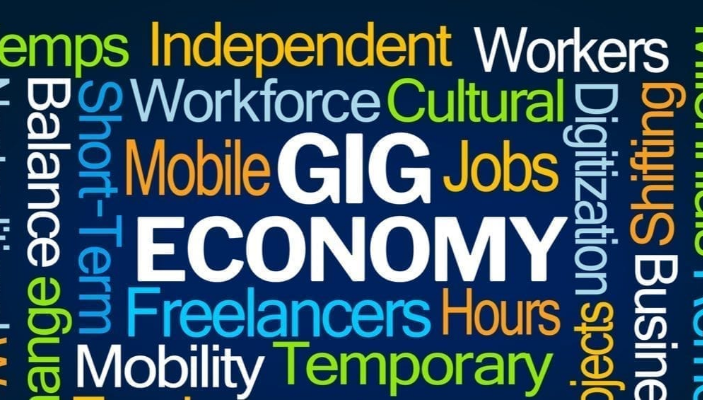In 2025, social media is more than a digital diary—it’s a full-blown economic engine. What started as personal expression has evolved into a lucrative path for creators, content curators, and everyday individuals. Social media influencers are making real money by creating value, fostering trust, and driving engagement at scale. But how, exactly, are they doing it?
This guide explores the real-world strategies influencers use to earn, monetize, and expand their reach in today’s attention economy—without resorting to empty hype or exaggerated claims.
Influencer Income: From Hobby to Business Model
The Creator Economy in Numbers
Recent reports show the global creator economy is worth over $250 billion, with projections suggesting it will reach $500 billion by 2027. Platforms like YouTube, TikTok, Instagram, and even LinkedIn are now active ecosystems where content turns into cash.
According to Influencer Marketing Hub:
- Top influencers can earn six to seven figures annually.
- Micro-influencers (10K–100K followers) can make between $500 to $5,000 per month, depending on niche, platform, and engagement.
These figures aren’t inflated—they reflect genuine earning potential when content, strategy, and audience trust align.
Monetization Channels That Actually Work
Influencers earn through multiple revenue streams, often combining several to build consistent income. Here’s how:
1. Brand Collaborations and Sponsored Content
Brands pay influencers to showcase products or services authentically. The average rate depends on audience size, engagement, and niche relevance.
- Instagram Stories (10K+ followers) can earn between $150–$500 per post.
- YouTube sponsorships range from $500 to $50,000 per video for mid- to large-tier creators.
The key? Transparency, niche authority, and well-aligned products.
2. Affiliate Marketing
Influencers recommend products with unique tracking links. They earn a commission for each sale or lead.
This model works best in tech, fashion, fitness, and beauty—where product discovery and reviews drive high-conversion traffic.
3. Platform Revenue Sharing
Social platforms now reward creators directly.
- YouTube AdSense: Monetization begins at 1,000 subscribers and 4,000 watch hours.
- TikTok Creator Fund & Pulse: Pays per view based on engagement and reach.
- Instagram Reels Bonus Program: Select creators earn from Reels’ performance.
4. Selling Products or Services
Many influencers launch their own:
- Digital courses or coaching
- Merchandise or physical products
- E-books, presets, or printables
Platforms like Shopify, Gumroad, and Teachable make this possible with low overhead.
5. Subscription and Fan-Based Revenue
Recurring income models like:
- Patreon
- YouTube Memberships
- Instagram Subscriptions
…allow fans to support creators directly in exchange for exclusive content or perks.
What Makes an Influencer Earn More?
1. Audience Trust > Audience Size
Big followings don’t guarantee big income. Micro-influencers often outperform mega influencers in engagement because their communities feel more personal.
According to a Kantar report, authenticity is the #1 trait followers value. Brands know this—and they pay for it.
2. Consistency and Content Clarity
Those earning the most:
- Post consistently (3–5x per week)
- Stick to a niche (fitness, tech, skincare, etc.)
- Deliver value—educational, entertaining, or emotional
3. Platform-Specific Strategy
Each platform rewards different behavior:
- YouTube: Long-form content, retention rate, watch hours
- Instagram: Visual storytelling, Reels, carousel value
- TikTok: Trends, fast hooks, relatable micro-moments
Influencers tailor their strategy to match platform algorithms without compromising content quality.
Behind-the-Scenes: The Business Side of Influence
Being a successful influencer today requires more than aesthetics and likes—it’s a business.
1. Media Kits and Rate Cards
Top influencers create professional media kits with:
- Bio and niche summary
- Audience demographics
- Engagement stats
- Past brand collaborations
- Rate sheets
This helps pitch to brands professionally.
2. Analytics and Performance Tracking
Influencers use tools like:
- Google Analytics
- Instagram Insights
- YouTube Studio
- Sprout Social
…to monitor what’s working, track growth, and refine content.
3. Contracts and Legal Protections
Smart creators:
- Sign contracts for each paid collaboration
- Use NDAs and intellectual property clauses
- Comply with FTC disclosure rules (#ad, #sponsored)
This builds long-term trust and protects income streams.
Niche Matters: Where the Money Really Is
Not all niches are equal in earning potential. Some consistently generate more income due to product alignment, high consumer spending, or strong brand demand.
High-Performing Niches in 2025:
- Personal Finance and Investing
- Tech and Gadgets
- Fitness and Wellness
- Luxury and Lifestyle
- Parenting and Family
- Education and Career Coaching
Creators who pair niche content with authentic voice often win both loyal audiences and paying sponsors.
Common Myths About Influencer Income
Myth 1: You Need Millions of Followers
Fact: Nano-influencers (1K–10K followers) can earn decent income through niche targeting and direct product sales.
Myth 2: It’s Easy Passive Income
Fact: Most influencers work 30–60 hours per week creating content, editing, negotiating, and planning. It’s a job—with hustle.
Myth 3: Going Viral is the Goal
Fact: Sustainable income comes from consistent engagement, not random virality.
Ethical Influence: Why It Matters
As monetization rises, so does responsibility. Creators must balance earning with ethics.
Key Practices:
- Disclose sponsored posts clearly
- Avoid promoting misleading or harmful products
- Respect audience trust above short-term gain
The best influencers build brands that last—not just short-term profits.
Tools Influencers Use to Grow and Monetize
Some platforms and tools are essential to manage time, measure progress, and optimize earnings.
Content Creation:
- Canva Pro: Thumbnails, Reels covers, stories
- CapCut / Final Cut Pro: Video editing
- Notion: Content calendar and idea tracking
Monetization & Sales:
- Gumroad / Shopify / Ko-fi
- Affiliate platforms like Impact, Amazon, CJ
- Link-in-bio tools (Linktree, Beacons)
Analytics:
- SocialBlade
- Metricool
- Google Trends + Keyword Planner
Influencers Earning Big: Case Examples
1. Fitness Influencer: 50K Followers
- Earns $7,000/month from:
- 2 sponsored posts ($2,000)
- Online course ($3,000)
- Affiliate products ($1,000)
- Patreon ($1,000)
2. Book Reviewer: 20K Followers
- Earns $2,500/month from:
- Sponsored book reviews ($1,000)
- Affiliate links to Amazon ($500)
- Self-published eBook sales ($1,000)
These creators focus on value, trust, and niche—not virality.
Getting Started: Building a Sustainable Influencer Brand
You don’t need to chase trends. Here’s how to begin with a strong foundation:
Step 1: Choose a Clear Niche
Ask:
- What topics do I genuinely care about?
- Where can I offer real value?
Step 2: Set Up Professional Profiles
Consistent branding across platforms. Bio, profile pic, highlights, links—all matter.
Step 3: Post with Purpose
Use a content strategy. Offer a mix of:
- Educational tips
- Personal stories
- Behind-the-scenes
- Interactive content (polls, Q&A)
Step 4: Engage Authentically
Reply to comments, DMs, and shares. Build a community, not just a following.
Step 5: Explore Monetization Early
Even with 1,000 followers, you can:
- Use affiliate links
- Offer small digital products
- Reach out to small brands for collaboration
Future of Social Media Income: What’s Next?
1. AI-Powered Content Tools
Expect creators to use AI to assist with:
- Caption writing
- Hashtag research
- Trend forecasting
But human connection will remain the core value.
2. Decentralized Platforms
Web3 may enable influencers to own and monetize content more transparently through blockchain-based social apps.
3. Niche Micro-Communities
More creators will shift from public feeds to private, high-value communities on platforms like:
- Discord
- Circle
- Telegram Premium Channels
Where focused content and exclusive access convert better than public reach.
Conclusion: Building Real Income Through Influence
Earning from social media isn’t a fantasy—it’s a growing part of the modern economy. But it’s not about overnight fame or empty trends. It’s about strategy, trust, and offering real value.
By focusing on content quality, audience connection, and smart monetization, influencers—from all walks of life—are building careers that last.
If you’re ready to start, remember: be real, stay consistent, and treat your audience with care. That’s the real currency of the social web.
FAQs
1. Can I earn money on Instagram with just 1,000 followers?
Yes. Through affiliate marketing, small brand deals, and selling digital products, even small accounts can monetize.
2. How do influencers get paid?
Most are paid via direct deposits, PayPal, or platform-specific payouts from ads, sponsorships, and subscriptions.
3. Which platform pays influencers the most?
YouTube tends to pay the highest per view through AdSense, but TikTok and Instagram can be more lucrative through brand deals.
4. What skills do successful influencers have?
Content creation, audience engagement, storytelling, negotiation, and data analysis are key.
5. Is it too late to become a social media influencer?
No. New niches and platforms keep emerging. With a clear voice and strong value, anyone can grow—even in 2025.







![Scale Fast with Siege Market [Brand Growth Tips]](https://wisheszing.shop/wp-content/uploads/2025/07/Scale-Fast-with-Siege-Market-Brand-Growth-Tips.png)